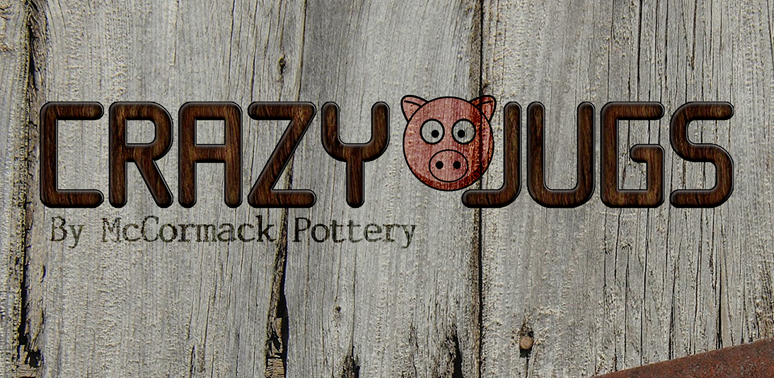Coneheads
Hang around potters for any amount of time and you’ll start hearing a foreign language. Unfamiliar words like ‘vitrification’ and ‘extrusion’ mixed with ‘Bisque’ and ‘glaze’ can make one wonder exactly what it’s like to stand at the altar of a clay god. So here are a few definitions to help you out.
Raw clay that has been formed and dried is referred to as greenware. No idea why, but I do know that it’s basically dried mud and just as fragile. You can see the shape and envision the finished product but just don’t mishandle it at all.
Somewhere along the way from clay to greenware, we pass through the land of ‘leather hard’. It’s a magical time where the piece can be worked, molded, added to, sculpted and modified without cracking. Leather hard is where we attach handles, create faces, trim bottoms, and make final adjustments.
As we move from Leather Hard to greenware, the forces of clay begin to work against the potter. Bottoms that weren’t compressed yield and crack, handles that weren’t attached correctly or dried at a faster rate pop off the main piece and relegate it to recycling. Plates formed perfectly flat begin to warp and misshape. Anything can happen during this time, and for the potter it’s a waiting game and learning curve all rolled into one.
Greenware perfectly dried is ready for firing in a kiln (baking in a really HOT oven) Once in the kiln, it’s game over for recycling. Your committed. The first firing is called a ‘bisque’ firing. Some people call it biscuit, but I’m from the south and you just don’t’ mess around with that word, and before you correct me I know that ‘Bisque’ is another name for a soup that has cream in it. I like them both.
So bisque firing takes the piece to a point where there is no more water in the clay. In fact if the piece enters the kiln with water in it and is heated too fast, it explodes rather spectacularly, taking other pieces with it along the ride to the scrap pile. This is why we program a ‘hold’ into the kiln firing cycle, hovering around 200 degrees (90c) where the last remnants are evaporated before the piece is fired.
This is where we have a discussion about cones, which is a measurement of how hot a kiln gets before the firing is terminated. Back in the early days of pottery, it was a complete guess by the potter when his wares were ready in a kiln. Often these kilns were fired by wood and later, coal, gas or electricity. In the late 1800’s, research led to a system where components were mixed and melted at certain temperatures. These were formed in the shape of a cone and potters would put several in the kiln and watch them through peepholes. Each cone bends at a specific temperature and potters would put several lower temperature cones in view along with the final goal cone. As the lower ones bent, they could start the shutdown process of the kiln as it ‘matures’ at an exact temperature for consistency. Today, we still use ‘witness cones’ to prove a kiln’s settings, but firings are largely controlled by computers with thermocouples (basically thermometers) that are calibrated to monitor the firing process.
Each cone has a number and they start at 022 and run all the way to 12+ Think of something with an ‘0’ in front of it as being a negative number. I don’t know why they did it this way, but it’s what we have and potters all use it. So when you hear ‘I bisque fired it to 05’, that’s potterspeak for “The first time I fired the piece to a temperature of 1870 degrees F” or “ I glaze fired it to cone 5 with a 30 minute soak” means it was fired to 2117 Deg F and kept at that temperature for 30 minutes. In potters shorthand, you’ll see cones referred to as ^6 or ^05 as well.
Back to firing… After bisque firing, the piece is ready for decorating and glaze firing. Bisqueware is extraordinarily porous and will soak up anything with water in it like a sponge. This is where we can paint on underglazes, which are basically different colored clays and they will become a part of the final product. We also glaze pottery with combinations of clays, colorants and chemicals that will basically bind to the piece as it becomes vitrified, which means completely melted together and resilient in the final firing process.
For our work, the final step is firing to a solid ^5 with a 30 minute preheat and normal cooling. Hopefully this brings a little more meaning to the jargon a potter uses.
